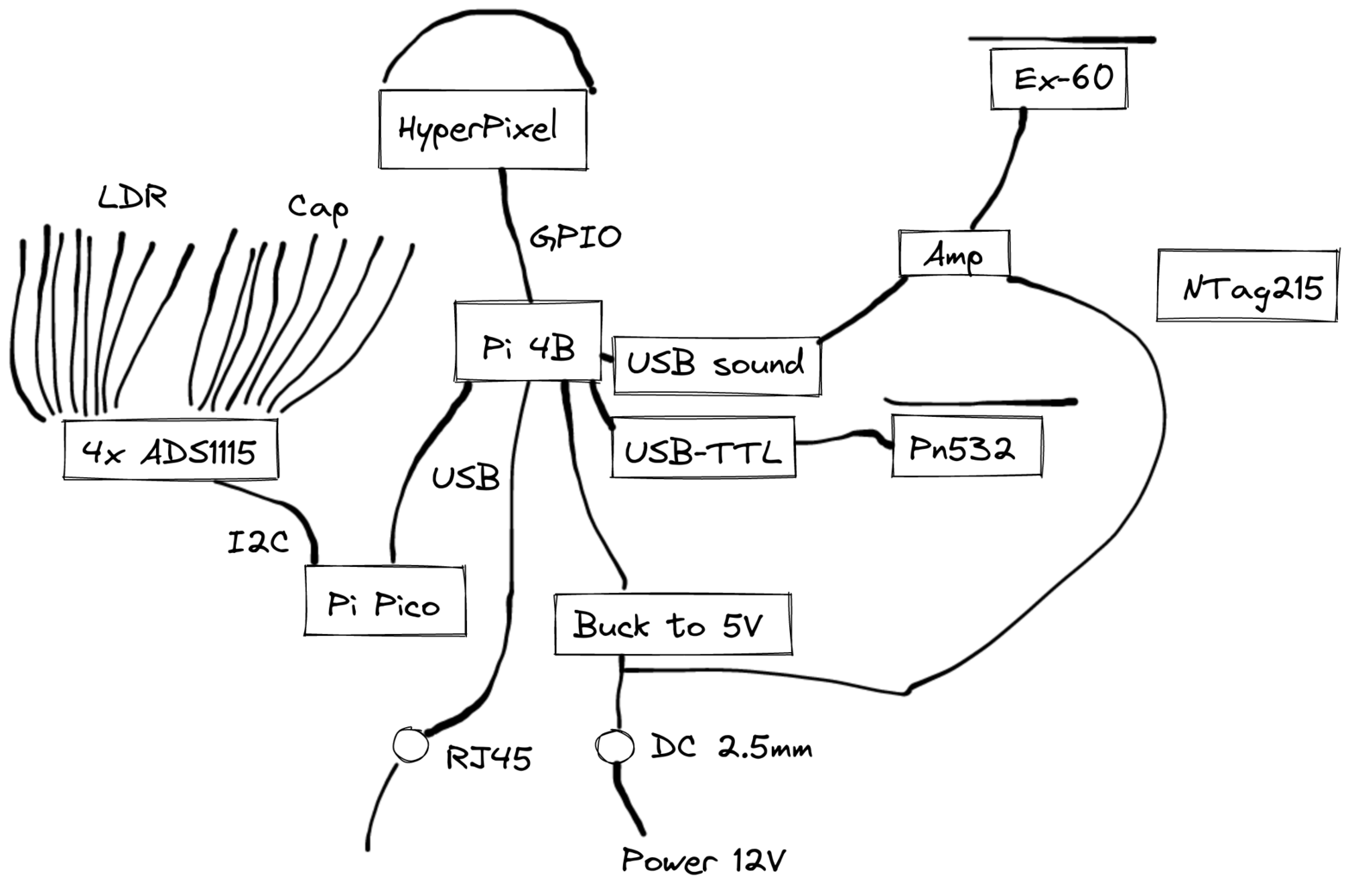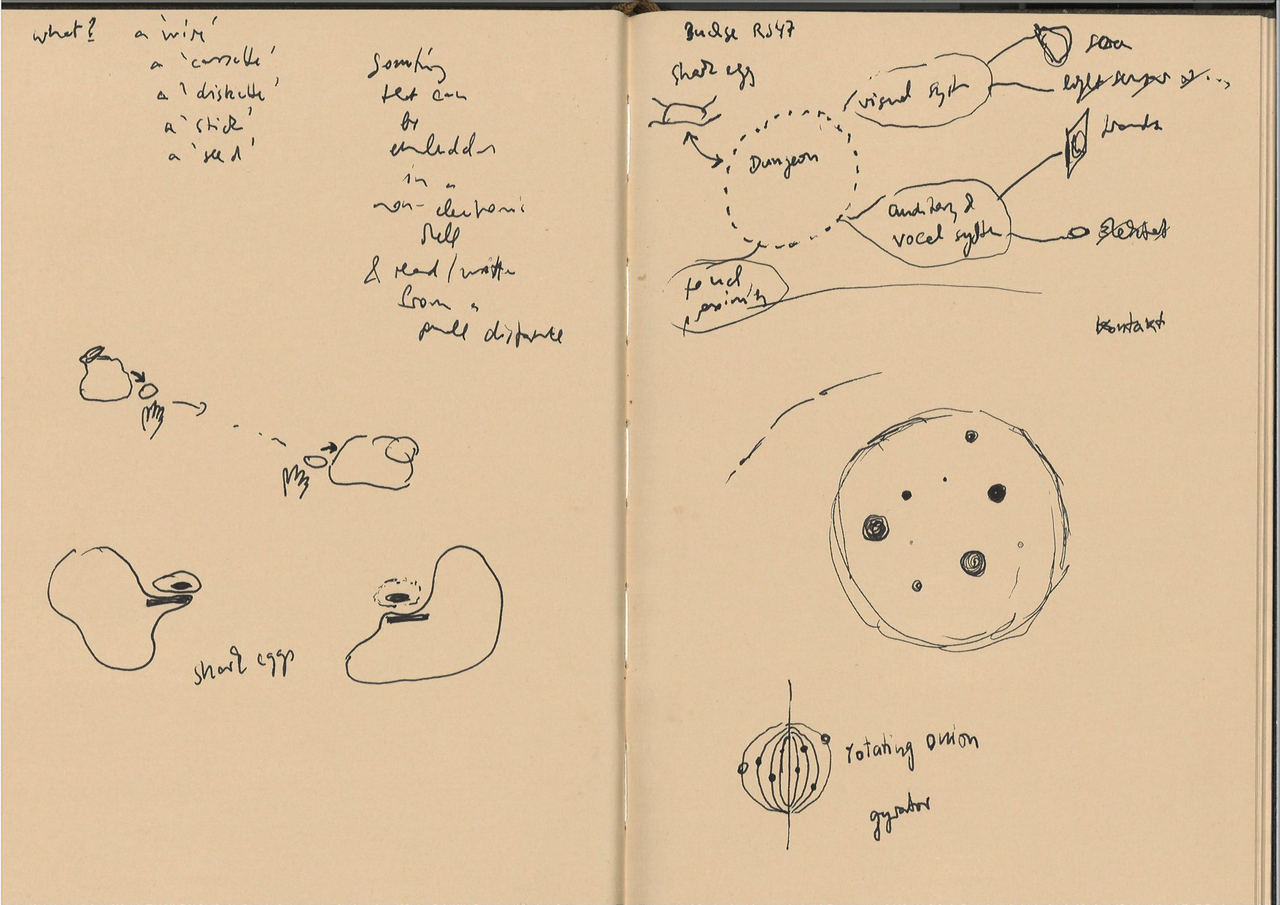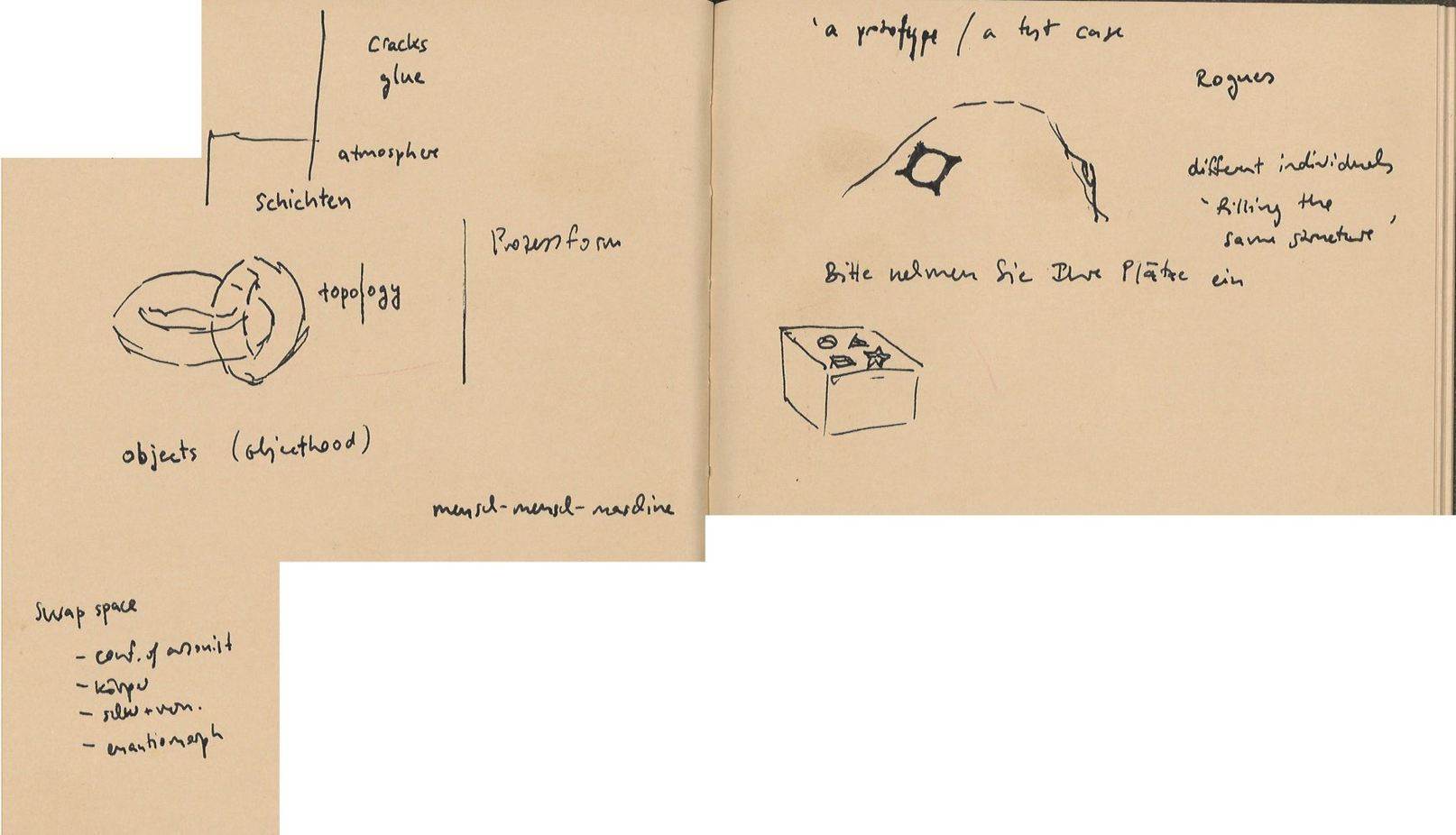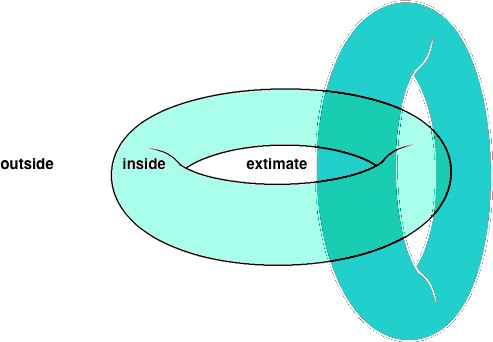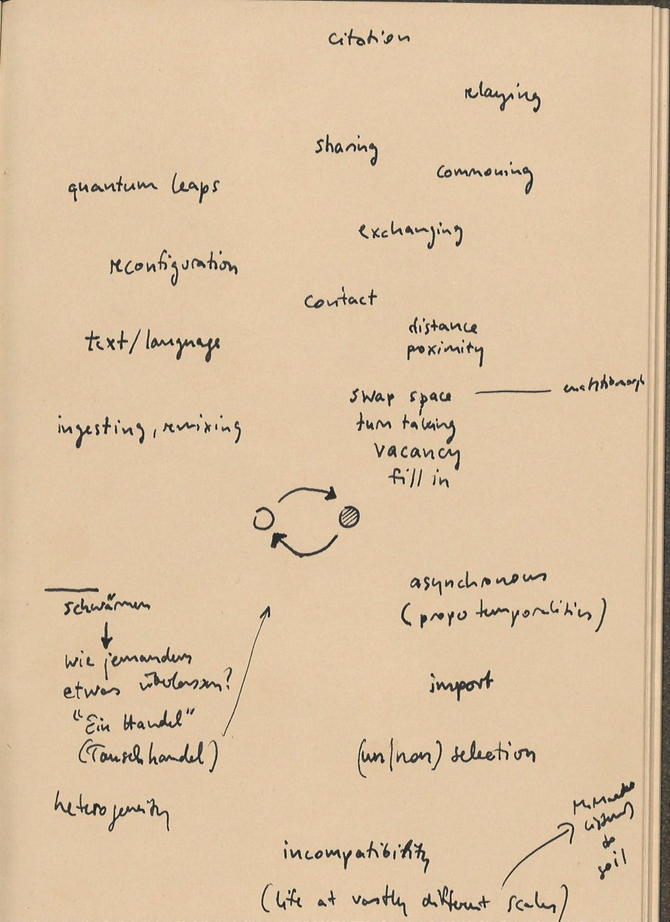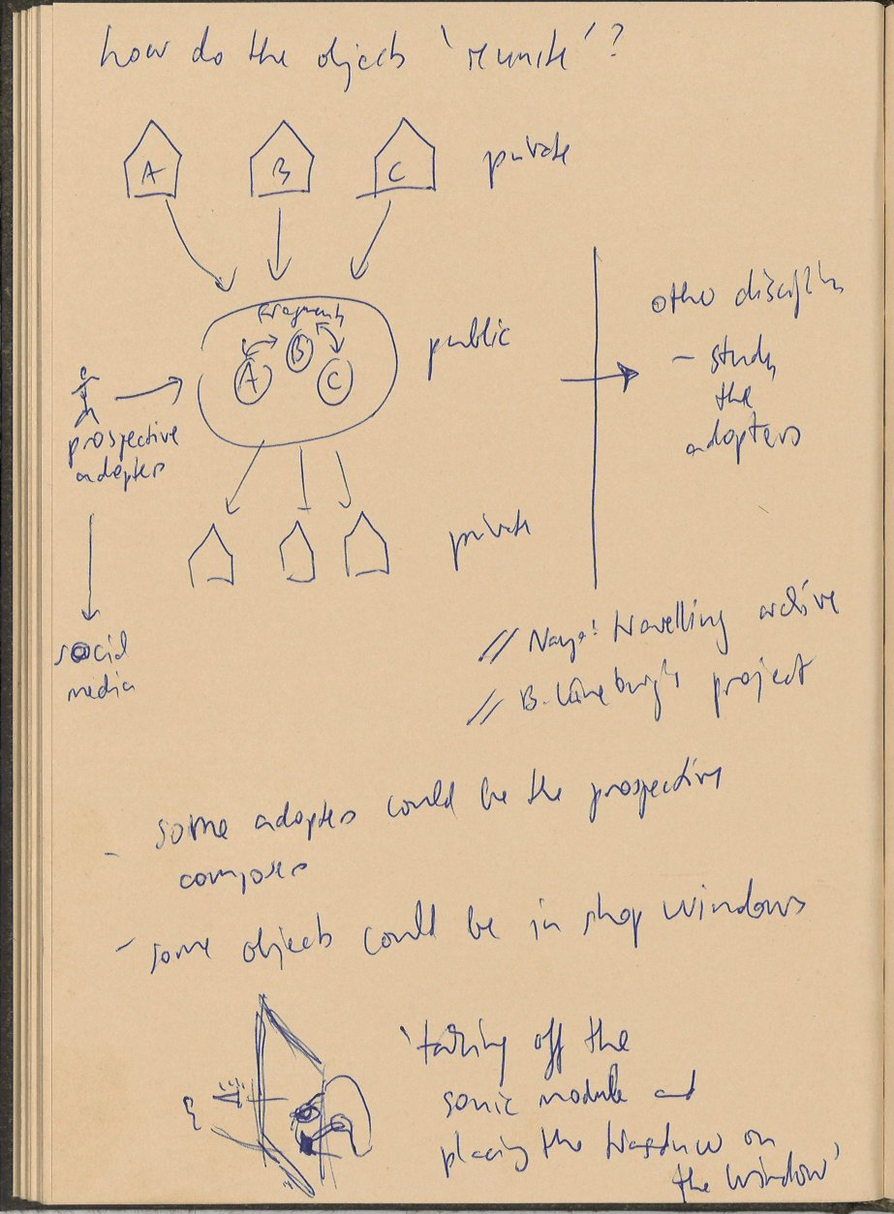{date: 211217}
amendment: the cap sensors actually work by using one GPIO out pin, and one GPIO in pin, working with a delay calculation; so they don't sit on ADCs. Multiple sensors can be driving with a single out pin IIRC, so for eight caps one would need 9 GPIO pins.
{hhr 211219}
I have done many sketches and doodles in the past months, sadly I wasn't persistent with dating them, and they appear now in a slightly random order.
{hhr 220109}
In a way, the piece takes inspiration from the 2018 objects Körper α and Körper β. We always intended to create more instances in a series, and there are some materials (containers, wires, rods) here in the studio that were meant for Körper ɣ, but it never materialised. Already back then, I had thought about exploring conductive sensing, and we made some preliminary tests; but we never followed up on it. In Rogues, the plural is important (or will be important, when things take form), also the more open-ended (and slower) process.
{hhr 211219}
I started reading Yuk Hui's new book in August. There is this nice passage (p. 76):
“Technological determinism means first of all surrendering thinking to a narrow technocracy, limiting the way the world is understood and operated to a particular understanding of technology and its future, while that same technology meanwhile promises that everything is possible.”
{date: 211219}
the object could be a multiple, like making an “edition". We found a metal stand that could perhaps hold the ceramics. If you have a multiple, then humans could be requested to pass something from object to objects, a nutrient, a form of communication, a fragment of a map. The human becomes the rogue (traveller), the human is engaged in phoresy.
{date: 211219}
how could one carry something from one object to the other? using a piece of (magnetised?) wire, or a “cassette”, “disk", a “seed”. Something that can be embedded in a non-electronic shell, that can be readable and writable from a certain distance by the objects.
Naya came up with the association of shark eggs, which are really fascinating and weird things. They could store a piece of information exchanged, coming from the “dungeon” that is the interior world model of one object, which in turn also feeds the visual and sonic actuators, and which is built or transformed by sensing the immediate environment, a form of contact-making. The egg would permit two more remote objects to share parts of their world views.
The visual actuator showing a sort of planetary system, a rotation of onion layers, a gyroscope.
World A and B may share part of their topology, including perhaps NPCs and objects, but the agents would transparently interpenetrate without ever “meeting” each other; except perhaps for their traces.; the traces would age, and their mutual discovery would produce significant visual or sonic responses, so that the human action of exchanging data is honoured. Each instance has a unique id for its “rogue”.
How large is the world? (is it circular?) An “endless house”, a Möbius strip.
Four sources of world experience: sound/mic, light/vision, touch, exchange. Two actuations: sound/transducer, video, (kinetic?)
cracks, glue. atmosphere. Schichten (layers). topo|ogy | Prozessform. objects (objecthood). mensch-mensch-machine (human-human-machine). swap space.
‘a prototype / a test case’
Rogues
different individuals ‘filling the same structure’
Bitte nehmen Sie Ihre Plätze ein (please take your seats / please occupy your locations)
relaying
sharing
quantum leaps
commoning
reconfiguration
contact
text/language
dinstance. proximity
ingesting, remixing
swap space (--- enantiomorph). turn taking. vacancy. fill in
schwaermen: wie jemandem etwas ueberlassen? "Ein Handel" (Tauschhandel)
heterogeneity
asynchronous (proper temporalities)
import
(un|non) selection
incompatibility (life at vastly different scales): M.Maeder, listening to soil
{date: 211219}
as “guests”
as “art'o'thek”
as “library items”
{date: 211219}

